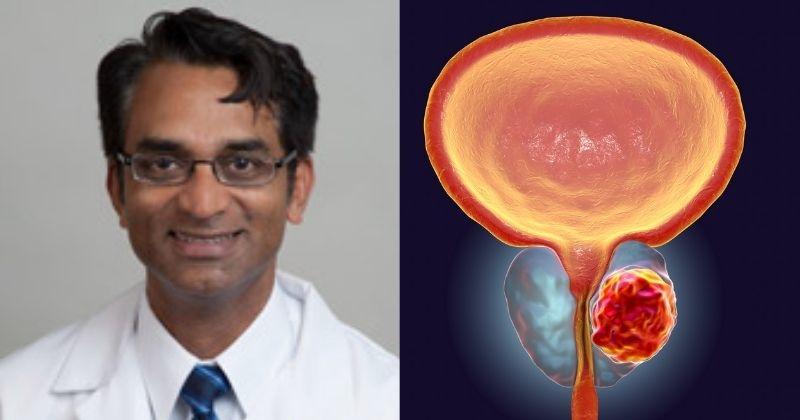No products in the cart.
Meet S. Raman- Indian origin doctor who discovers an easy method to cure Prostate Cancer
Scientists have long been running several trials and experimentation with a view to finding a cure for cancer in today’s world. Though there have been advanced medical research studies worldwide, the bitter reality is that even now, we still don’t have a 100% cure for cancer.
According to the World Health Organisation, Cancer is the second leading cause of death in the world, with as many as 9.6 million mortalities in the year 2018 itself and it is still counting in this year.
Prostate cancer, like every other type of cancer, has its own issues that gives nightmares to a patient. Treating the cancer-affected gland near the urethra, just outside the bladder part is an extremely challenging affair with its sensitive nature.
Proceeding with surgery or radiation therapy isn’t going to help the patient at all as it can result in irregularity in bowel functioning. In an attempt to stop this once and for all, an Indian-origin researcher in the United States has created a new therapy method that can help combat Prostate cancer without the aforementioned issues.
The therapy is called TULSA- transurethral ultrasound ablation. This is a minimally-invasive, which means it doesn’t require tough cuts or stitches. In this therapy, a rod-shaped device is finely inserted into the urethra which releases controlled doses of soundwaves to the affected prostate tissue. By doing so, it won’t impact the healthy nerve that surrounds it.
The device has up to 10 ultrasound-generating zones that end up covering the complete prostate. The sound waves generate heat and eliminate the prostate tissue that is causing trouble. The entire process is done with the patient in an MRI scanner. In this manner, the doctor can monitor the healing process in real-time.

Steven S. Raman, M.D., who is the study co-author, professor of radiology and urology, and director of Prostate MR Imaging and Interventions and Prostate MR Imaging Research at the University of California at Los Angeles (UCLA) added in a statement that: “Unlike with other ultrasound systems on the market, you can monitor the ultrasound ablation process in real-time and get immediate MRI feedback of the thermal dose and efficacy.It’s an outpatient procedure with minimal recovery time.”
Researchers performed a 12-month clinical trial where they enrolled as many as 11 men with an average age of 65 years who are affected with prostate cancer. The total treatment lasted 51 minutes and the medical reports revealed that before treatment, the average volume of prostate of the study group was around 39 cubic centimetres. However, after a year of treatment, it came all the way down to 3.8 cubic centimetres.
Seventy-two out of 111 men, had no proof or evidence of any cancer at biopsy, a year after the therapy. However, blood levels of prostate-specific antigen (PSA) which is an indicator of prostate cancer had dropped an average of 95 percent. The blood also disclosed low levels of extreme toxicity and the patients had no bowel complications.
Raman further added saying that there are two different things about the system. He even gave a clarity about in detail. “There are two very unique things about this system. First, you can control with much more finesse where you’re going to treat, preserving continence and sexual function. Second, you can do this for both diffuse and localized prostate cancer and benign diseases, including benign hyperplasia,” he added.
It has been learnt that the treatment gets approval from not only in Europe but also in the United States.










